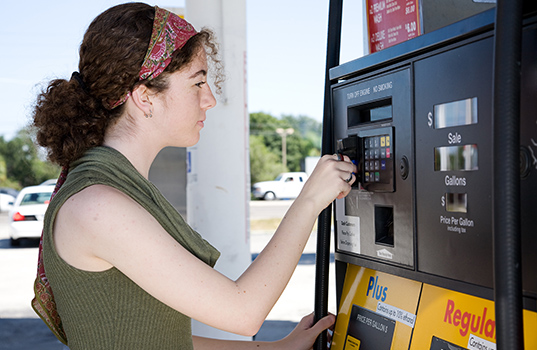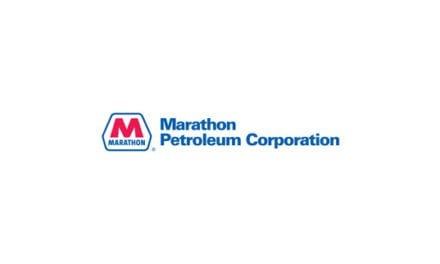By Bill Pittman
The EMV liability shift deadline is April 16–17, 2021. What does this mean for gas stations? Barring a last-minute extension by the credit card companies, station owners will be responsible for the financial burden if there is a chargeback with an EMV card and the stations do not support EMV. Prior to the deadline, the financial institution was responsible. Now, station owners will be accountable if they do not support EMV at the pump and the customer uses a chip card.
It is easy to obtain cardholder data online and make a fake magstripe card. It is virtually impossible to make a fake EMV card due to the chip in the card. This is why the credit card networks are pushing everyone to EMV—those fake magstripe cards will no longer work. In fact, virtually all new cards issued are chip cards, and many support the new trend to contactless payments. This means that most of your customers will have a chip card, and if your station does not support EMV, you will lose the chargeback request every time. Even if you have a video of them signing, the station owner will lose the chargeback and be liable.
The amount of fraud targeting outdoor fuel dispensers is expected to hit more than $450 million this year. Based on historical evidence from the EMV liability shift in the retail industry years ago, those thieves will target stations that do not have EMV at the pump. If your station is not a target for fraud today, and you do not upgrade, there is a good chance your station will be a target for fraudulent activity after April.
With margins low on fuel, the financial implications could be huge. It will only take a few chargebacks with large SUVs to wipe out profits for the day. Spending money upgrading equipment to support the card associations can be a difficult pill to swallow, but there’s not much choice if you want to accept charge cards. We are also seeing a transition to card use and less cash due to COVID-19. In fact, according to a report from VISA, 70% of consumers have changed the way they pay, and contactless is growing.
With numerous industry surveys released last year and this year, stations are still hesitant to upgrade their pumps to support EMV. Conexxus survey results from 2020 indicated that only 15% of fuel retailers had upgraded at the fuel island. Another survey indicated that 39% would not be upgraded by the time of the mandate and that up to 30% were not planning on upgrading at all due to cost and inconvenience. Past survey results also revealed that stations were unaware of other upgrade options other than a full pump replacement. Here are the options:
- Purchase new pumps from a pump manufacturer that supports EMV
- Purchase an EMV retrofit kit from a pump manufacturer
- Purchase a new pump from a pump manufacturer that does NOT support EMV and upgrade it with an EMV retrofit kit from a third party
- Purchase a used pump that does not support EMV and upgrade it with an EMV retrofit kit from a third party
- Upgrade your existing pumps with an EMV retrofit kit from a third party
Purchase New Pumps
Pump manufacturers prefer that retailers purchase news pumps. There are some advantages—you have all the equipment from the same manufacturer. The station will look new and modern and reduce maintenance costs. Pumps typically require more maintenance as they age. If you have older pumps you may want to take that into consideration. Cost is the downside. There is the cost of the pumps themselves as well as potentially new hoses, nozzles, plumbing fixtures, pump software and inground tanks. The cost of new pumps alone is between $12,000 to $15,000 per pump. Then you have the cost of the installation. This includes construction costs, labor costs and new permits. Perhaps most important is lost revenue. The station will need to be down about a month, so you will lose fuel and merchandise sales during this downtime. Also, customers are creatures of habit. If they get used to going to another station when you are down, they may not return or they may not return to the same frequency.
Purchase EMV Retrofit Kit From Pump Manufacturer
Most pump manufactures have EMV retrofit kits for their newer pumps. If you just purchased a new pump in the last year or so they probably have a retrofit kit for you. However, if you have an older pump they want to sell you a new pump. The EMV retrofit kits from the pump manufacturers are typically expensive as well—usually between $5,000 to $8,000 per fueling point. You will (likely) have to upgrade the forecourt controller. This method also uses full integration, meaning that you will have to upgrade the software on your forecourt controller. The benefits of semi-integration are defined below.
Purchase New Pump That Does NOT Support EMV and Upgrade It
Why would you do this? To reduce upfront equipment cost. A pump that does not support EMV can be up to half the price of a new EMV pump. Add a couple thousand dollars for a third-party retrofit kit and you have still saved a bundle. You get the advantages of the new pump but also still have the construction costs and lost revenue to consider during downtime.
Purchase a Used Pump That Does NOT Support EMV and Upgrade It
The pump manufacturers are pushing station owners to purchase new pumps, and many people are doing just that. This requires you to pull out the old pump to put in the new. The result is there are a surplus of used pumps on the market that can be purchased at a lower price. The life of a pump is between 12 and 15 years. Many of these pumps are not that old yet, and you can find one for a few thousand dollars. You can purchase a used pump and upgrade it with a third-party retrofit kit and have an EMV-enabled pump. You would get an EM- enabled pump for much less but still have the construction costs and lost revenue to consider during downtime. However, this could be an option to consider for those opening a station. Costs would be low.
Upgrade Existing Pumps With EMV Retrofit Kit From Third Party
Upgrading your existing pumps to support EMV is another option. This allows you to utilize your existing pumps and equipment without having to shut your station down for the upgrade. This approach is one-third of the cost of a manufacturer retrofit kit and allows you to upgrade one pump at a time. Upgrading one pump gives you a “try before you buy” option. You can upgrade one pump and then do the rest of your station. It typically takes about an hour to upgrade each pump, so it is a very fast upgrade, reducing labor costs.
These new solutions also provide you with new technology like enhanced security (PCI and end-to-end encryption), QR code scanning, PIN-on-glass, MSR, and EMV chip & PIN and contactless via card tap or NFC (Apple Pay, Samsung Pay). New systems utilize the cloud to adhere to internal systems and interfaces with standard industry protocols. Deployment and industry strategy ensure a seamless transition and minimize downtime by phasing deployment while also giving the option to temporarily run the old and new system simultaneously.
There are a few important points to consider when evaluating a retrofit upgrade:
- Does the vendor use a semi-integrated solution at the pump, or does it require a fully integrated solution?
- Does it utilize WiFi so you don’t need to break up concrete and lay new cable?
- Does it allow for easier scalability? What is the installation process—can you upgrade one pump at a time, or do you need to shut the station down?
- What about security? Is it tamper resistant and is it end-to-end encryption or P2PE i.e. card data encrypted at the point of entry?
The Importance of Semi-integration
Traditional industry certifications for EMV take about six-plus months to complete, which is why having multiple certification requirements is not ideal. With a semi-integrated solution there is a single certification because the device goes directly to the payment processor. For a fully integrated solution, which most of the industry supports, any time a component in the payment flow changes such as a card reader, forecourt controller or payment software, the solution needs to be recertified—a time-consuming, expensive process. A semi-integrated solution gives you the flexibility to change things without having to recertify.
I encourage you to make the decision now and move forward. If you wait to the last minute, you may have a problem getting your solution implemented in time, which will put your business at risk.
Bill Pittman is a senior vice president at Sound Payments Petro Solutions. Sound Payments is a multi-channel, diversified technology company that delivers innovative and cost-effective technology and software solutions in the payments, healthcare, financial services and petro industries. We are innovators who offer the best in software development, state-of-the-art equipment and unparalleled technical and customer service delivery. For more information on Sound Payments and its channels visit the website www.SoundPayments.com, [email protected] or call 844-319-5635.










